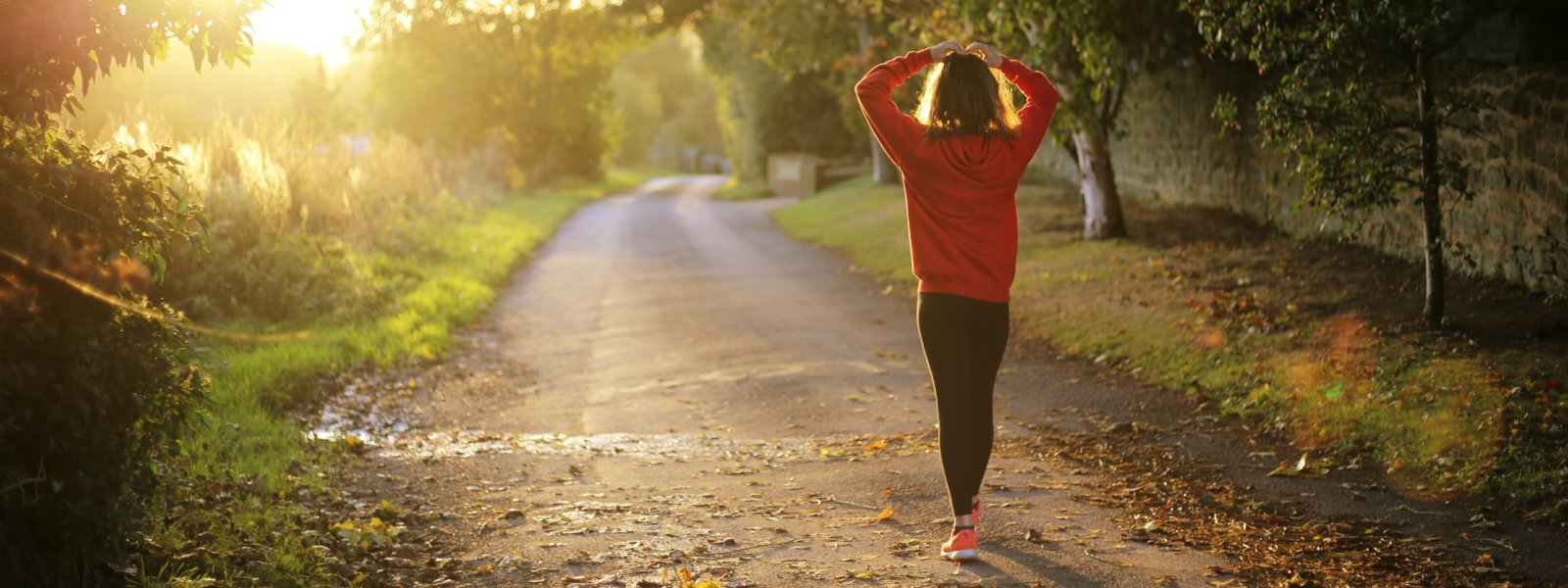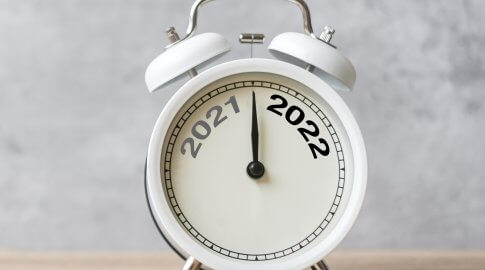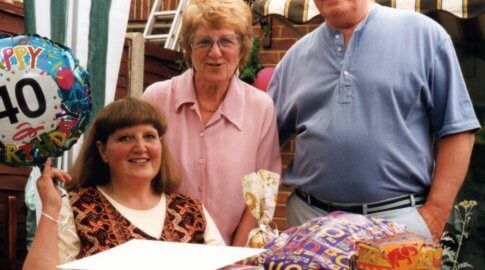Your exercise questions answered
Carol Keen spent five years as a specialist physiotherapist in pulmonary hypertension, helping hundreds of people get fitter and stronger with the condition. She answers these questions, submitted by PHA UK members.
Is exercising with PH safe, and why are we advised to do it?
The answer to this is yes, exercise is safe. We know that because we have a lot of research around pulmonary hypertension and exercise, and also because as PH professionals, we’ve been getting our patients to do exercise and be more active over a number of years.
We’ve seen the difference it can make to patients. It’s not just that exercise is safe, we also know that it can help patients to do more day to day, such as walk further without stopping, getting up the stairs without needing to pause, or being less short of breath at the top.
We’ve seen patients who have been able to get back into other activities, play with their grandchildren, or get back into work as a result of the exercise they’ve been doing. So, it can improve quality of life.
Exercise has lots of benefits for your mental as well as physical wellbeing and it’s a really good way for patients to start to take some control of their condition.
It is something you can manage yourself and a way that you can have input into your health and your wellbeing.
Exercise is safe and it’s really beneficial for patients with pulmonary hypertension.
Is it ok for me to get out of breath?
One of the reasons people worry about exercising is because when they exercise, they might feel short of breath. And when you’ve got a condition like pulmonary hypertension, feeling short of breath can be worrying for you because it’s one of your symptoms.
When you’re exercising, you are likely to feel short of breath, and in fact, if you’re exercising it is important that you feel short of breath because that is how you’re going to get fitter and stronger.
It is important though to gauge and to manage how short of breath you are.
When you’re exercising it’s important that you feel a little bit short of breath but that you can still chat. So, if you were out for a brisk walk or doing some exercise in your living room, and I was there with you, I might ask you how it is going – you’d be able to answer me, but your answer would be a little bit breathless.
You might have to shorten your sentences a little bit or take some extra pauses as you catch your breath. That’s perfect; that’s exactly the level of breathlessness you want to be at when exercising.
If you are gasping or panting, or you can’t catch your breath to speak, then you are exercising too hard, and you need to slow down.
If you’re not feeling breathless at all, then you are being ‘active’ but you’re not exercising.

What is the difference between ‘being active’ and ‘exercising’?
People often get a little bit confused about the difference between being active and exercising.
Both are important, whether you are managing a long-term condition or not. Staying active is doing things that involve moving, getting about, and physical activities that you might do during the day.
Generally, they shouldn’t make you breathless, and they shouldn’t increase your heart rate significantly; they should just keep you at a level pace.
Exercising is what gets your heart rate up, gets your breathing going, and gets you a little bit sweaty.
What counts as activity and what counts as exercise will be very individual, particularly for people with pulmonary hypertension.
For some patients, going for a walk might be exercise because it gets them out of breath, it gets their heart rate up and it gets them a bit sweaty.
For other patients, who maybe have less symptoms, going for a walk might simply be an activity for them, and something they do as part of their routine day to day.
Some people would be exhausted by walking around the shops. Some people would be able to go round the shops quite comfortably and that would be an activity for them.
It’s very individual and you have to work out for yourself when you’re being active and when you’re exercising. Like I said, it is important to do both.
How much exercise should I actually be doing?
The same rules and guidance applies to everyone, whether there is a health condition involved or not. We should aim to do 150 minutes of moderate intensity activity every week.
Moderate intensity activity is, as I’ve described above, when you’re a little bit short of breath but you can still chat. Your heart rate will be a bit elevated, but it is not going very, very fast.
At the moment you might be doing little or no exercise at all. If that is the case, I wouldn’t suggest you go out next week and aim to do 150 minutes straight away; gradually increase the amount you do, by five or ten per cent each week.
If you’ve got quite severe PH, it might be that only small amounts of activity count for you as exercise. In that case, you might get up to 150 minutes quite easily.
Anything that is a chunk of ten minutes or more counts towards your total, so you don’t have to be going out and doing an hour of exercise, and you don’t have to be going to the gym for 40 minutes.
If you’re doing something that gets you a little bit out of breath for ten minutes or more then it counts towards your 150 minutes of moderate intensity exercise.
The key is to work out what you are doing now and gradually build it up.

Are there any specific exercises that I should or shouldn’t be doing if I have PH?
The main thing is that the exercise you are doing is something you enjoy and that is accessible for you. That is the best form of exercise; everything else is pretty much on the table.
There are no specific exercises that you shouldn’t do, but we would say to avoid lifting anything heavy, and by that, I mean anything that makes you strain to lift.
That is not just lifting weights at the gym, but it might also involve moving furniture around the house or carrying big bags of shopping.
Anything that makes you strain or hold your breath to lift is something that might be a bit too heavy for you as somebody with pulmonary hypertension.
Other than that, if you’re a little bit short of breath but can still breathe, you can still chat and you’re not feeling dizzy, and you’ve not got chest pain, then you’re ok to go and do your exercise.
In terms of safety, the main principle is to start small and gradually build up the amount you are doing — whether that is the amount of time you are exercising for, or the intensity of your exercise.
Start with things you know you can achieve and gradually build it up. That way you will stay motivated, but also keep within the boundaries of your limits.
How sore or tired should I feel after exercise?
You might feel like your muscles are achy or even feel a bit sore, the next day. It’s the body’s normal response to exercise.
It’s a good idea to warm up before you exercise, particularly if you are doing quite a lot. Spend up to five minutes very gradually moving yourself about, stretching, gradually building up your heart rate, and getting your blood flowing around your body before you start. Cool down in the same way afterwards and make sure you stretch too. This will help you feel less sore.
It’s perfectly normal after you’ve been exercising to feel a little bit tired afterwards, but we do know many patients with pulmonary hypertension experience symptoms of fatigue.
If you’re finding that your exercise is leaving you feeling very wiped out or fatigued afterwards then it may be that you need to think about doing something less intense, or break your exercise up into smaller chunks and do more little and often.
Complete the chunks over a number of days so that your exercise doesn’t impact on your fatigue in a negative way.
Exercise and being more active over time can help to improve symptoms of fatigue, but it is important to get it in the right levels and the right way.
Why is walking recommended as exercise for people with PH?
One of the best forms of exercise that anybody can undertake is walking. It is free, it can get you outside in the world, it is good for your mental health and psychological wellbeing, and it can get you in touch with nature.
You can vary your pace when you walk; you can walk more briskly if you want to exercise, or you can walk more slowly if you are out of breath and just want to be more active.
Being upright and moving about can also help with joint stiffness and joint mobility.
It can help with specific problems like ankle swelling, which can be a problem for lots of people with PH. And it can help sometimes with abdominal or intestinal problems like bloating too, which again, can be quite common.
I would really recommend, as much as possible, that people try to build some walking into their exercise if they are able to.
If you don’t do much walking at the moment, start small. Start with a tiny walk and come back, take your coat off, make yourself a cup of tea, and tell yourself you are amazing. The next day, go a little further, and gradually build up the amount of walking that you do.

Can exercise improve your lungs?
We know that exercise is beneficial in patients with pulmonary hypertension. We know that it can improve what you are able to do functionally, and we know that it improves quality of life.
What it doesn’t do, is improve the underlying condition. It doesn’t change your pulmonary hypertension. It doesn’t improve damaged lungs and it doesn’t increase lung capacity where that is reduced.
But it does improve the circulation of the body; the way the body is able to transport oxygen around.
It improves the strength in the muscles and therefore allows you to do more. If you have reasonably low oxygen saturations, doing exercise might not change that, but it will allow you to do more within the limitations that you have – and that is why it is important.
How can I find the right balance, so that I’m not doing too much?
Exercise can make you feel more energetic, it can make you feel better, and it can make you feel healthier. But it is easy to overdo it, as if it makes you feel good, you might want to do more and push yourself harder.
Sometimes you might try to keep up with other people or it just might be general over-enthusiasm.
It is important to pace yourself and manage your energy levels. To do this, you might want to plan your week of exercise, planning your exercise sessions around other activities so that you’re not exercising on a very busy day – which might tire you out completely.
If you have planned to do some exercise one day but you’re having a bad time with your symptoms, that’s fine. Be kind to yourself, take care of yourself on that day, and wait until a better day comes along.
Exercise is really important, but you must manage it alongside your symptoms. Doing too much and pushing yourself too hard can take some of the enjoyment out of it.
Always speak to your PH specialist before embarking on a new exercise routine.

















